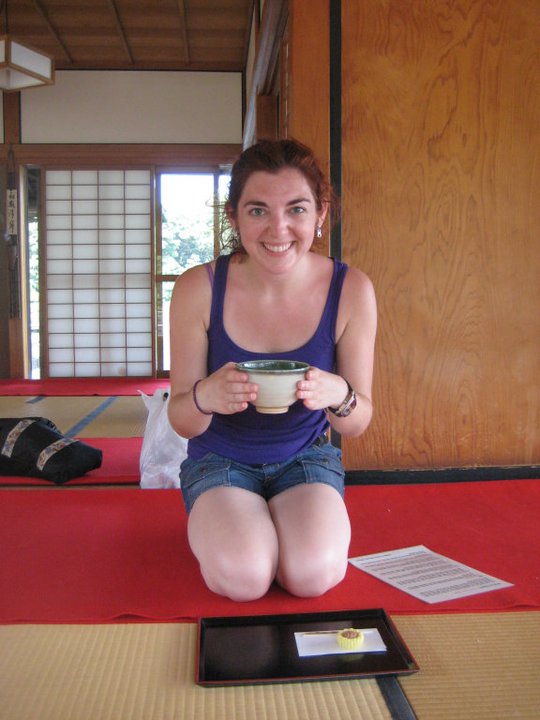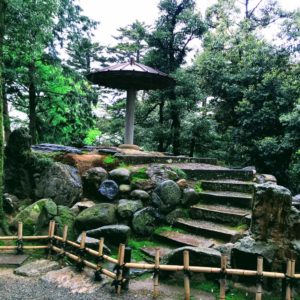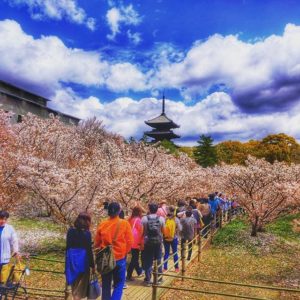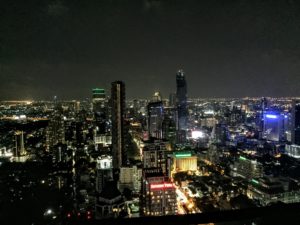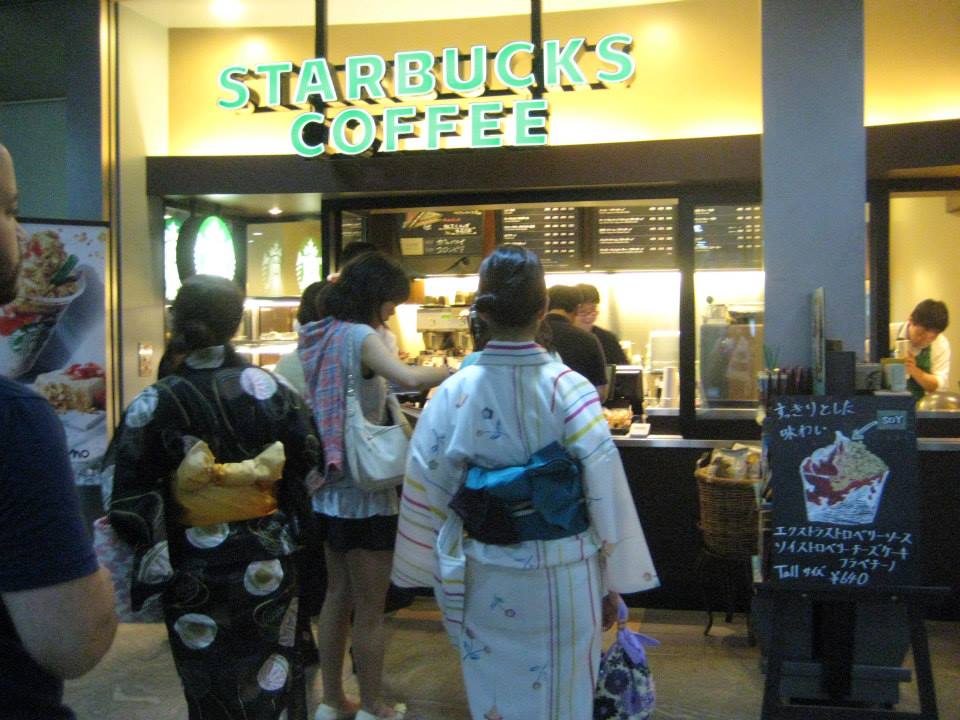
There is so much to do in Tokyo that it might feel a little bit overwhelming to start planning your trip! And if you’re like me, you want to make sure to experience the best of such a rich, complex culture.
Well I’ve got good news for you. It won’t be as tricky as you think!
Believe it or not, you can deeply experience pieces of ancient and modern Japanese culture, marvel at the spectacularly kooky Japanese fashion, and, of course, eat some of the freshest sushi…all in one or two days!
Is this list entirely comprehensive? Of course not! You can easily spend weeks, maybe years, in Japan and still learn something new every day! But if you’re looking for a place to start, these are some of some of the most enriching, exciting, and unexpected experiences I’ve had in my several visits to Tokyo.
Japanese Culture: Top 5 Can't Miss Experiences
Click any item on the list for more info!
Visit An Onsen
Visiting a traditional onsen is easily one of the most uniquely Japanese experiences you can find. If you have a strong interest in immersing yourself (no pun intended) in the cultures of the countries you visit, this is something you absolutely cannot miss.
There are many different onsens you can visit in Japan, but what exactly are they? Well, boiled down to the bare essentials (STILL no pun intended), an onsen is a a communal hot spring or bathing house. Now, there is absolutely nothing about this ritual that sounds appealing to me as a westerner. The last thing that I want is to sit in hot water with a bunch of naked New Yorkers. It’s quite enough for me to be on a hot subway with a bunch of fully clothed New Yorkers.
On my first trip to Japan, I did not plan to go to an onsen. It was way out of my comfort zone, and I felt like just knowing that such a bathing ritual existed was sufficient for my education of Japanese culture. However, some fellow westerners who were temporarily living in Japan at the time convinced me that it was absolutely worth braving the initial discomfort and giving it a shot. And I thought, you know what? I didn’t spend thirteen hours on a plane to stay in my comfort zone. So off we went.
Okay. So I'm naked, freaked out, and foreign. What am I supposed to do? What are the rules here?
The first thing to know about visiting an onsen: the Japanese meticulously expect that you enter the pools with a completely clean body.
After disrobing in the locker room (separated by gender), make thorough use of the little bathing “cubbies” that they provide for you. It’s usually something like a row of cubicles with small, detachable shower heads, perhaps a stool, a bucket, some body wash, shampoo, conditioner….everything you need to keep the onsen pools clean. If you have long hair, put it up if possible.
The only thing you bring with you is a little washcloth, which you use to wipe sweat from your face while bathing. Do NOT dunk it in the water.
I hope your mind is at ease that this shared bathing (or rather, soaking) ritual is completely sanitary. Now how about the whole “being naked around a bunch of strangers” part? Is your mind at ease there?
You have to trust me on this: even if it feels super weird in your culture and personal comfort levels, once you surrender to the experience, it stops being weird. It is so deeply normal and, quite frankly, extremely freeing. Nobody is looking at you. I repeat….NOBODY is looking at you. Everyone is focused on their own experience. Truly, after a few minutes of sitting naked in a tub with Japanese strangers, you completely forget that this was ever something new and uncomfortable. It’s truly magical. After emerging from my first onsen experience, I couldn’t wait to go back and do it again. It was as if I’d been reborn from the tense, body-conscious American who’d been so anxious and uncertain only hours before.
Tattoos at the Onsen
You may have heard that many onsens forbid tattoos. Well…you’ve heard correctly. I don’t have any myself, so I haven’t done extensive research on this topic, but if you’ve got some ink, make sure you confirm an onsen’s rules before visiting!
Best Onsen?
As I mentioned, there are many different onsens in Japan, and I really haven’t been to that many. Some are more family friendly and have multiple mixed-gender (swimsuits required) bathing areas. For instance, Yunessun in Hakone feels more like a hot spring theme park than an onsen. Something like that is a lot of fun, but not quite the deeply meditative and cultural experience that is typical of a traditional onsen.
My personal favorite is a little bit out of the way from the main city center, but quite convenient if you happen to be staying near Disneyland. It is called Ooedo Onsen Monogatari Urayasu Mangekyo. If just reading that name makes you need a relaxation retreat, don’t worry, they provide a great one! It is difficult to find a lot of information about this onsen because it is part of a hotel, so whenever I look it up, I find more information about the hotel than anything else. But you don’t have to be a hotel guest to enjoy the onsen!
Ooedo Onsen
Ooedo Onsen offers several options for indoor and outdoor bathing areas, as well as a mixed-gender area. I’m not sure how common it is to find a mixed-gender onsen that still manages to keep its feeling of traditional relaxation, but this one definitely does. I would really only recommend the mixed-gender experience if you are traveling with a member of the opposite sex and you want to experience it together. If you are traveling alone, you’d get the full onsen experience just from the single-gender fully nude onsen.
I’ve gone to Ooedo Onsen in Urayasu during every trip I’ve made to Japan (at the time of this writing, that’s four times), but it’s only because I was staying fairly nearby. If you have a favorite onsen that offers a similar experience but is nearer to the city center, I’d love to hear about it! Next time I visit Japan, if I happen to be staying near the city center, I will probably go out of my way to revisit this onsen. Whenever someone tells me to imagine a happy, peaceful place in my mind, this is always the place I picture.
Tsukiji Fish Market/Outer Market
Tsukiji has undergone some big changes lately! So too shall this section. Rewriting in progress!
Imperial Palace and Hamarikyu Gardens
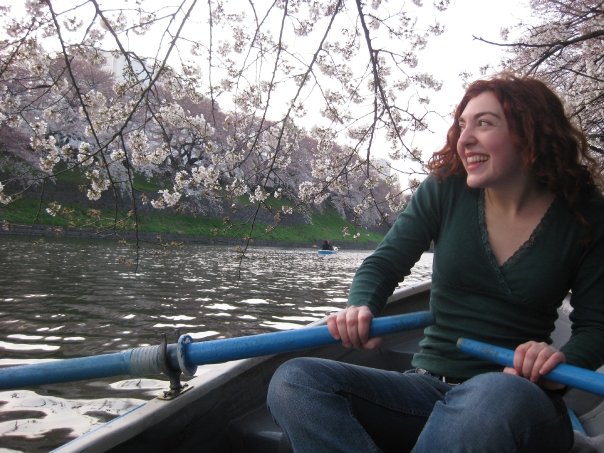

You should visit the Imperial Palace. Of COURSE you should visit the Imperial Palace. You can’t visit all parts of it every day, as it is still operational, but you can always visit the gardens, which are beautiful.
HOWEVER. I was far more impressed with the Hamarikyu Detached Palace Gardens, which are, as the name would suggest, located apart from the Palace itself.
It is a huge, sprawling garden that, in addition to being beautiful like any other garden, lends a glimpse into the lifestyle of the ancient families who used it. When you first enter, you will be greeted with the offer of an audioguide (which I recommend!) and a 300+ year old pine tree. Immediately, you can sense the depth of this place’s history.
Hamarikyu Hot Spots
As you continue on, you can see a large, long, empty gravel “lawn,” which was used for riding horses, and you can also peer through fortress-like structures with small holes designed for hunting ducks in the garden’s lakes. Toward the middle of the park, you will find one of my favorite parts in all of Japan: a traditional teahouse in the middle of the lake. This teahouse was once used as a place to welcome Ulysses S Grant to Japan, and now you can visit it too! Not only can you visit, but for a small fee, you will be provided with the full setup and detailed instructional guide for a small, traditional Japanese tea ceremony. You can stay as long as you like in this teahouse in the middle of a lake surrounded by gardens. I dare you not to be at peace in a setup like that.
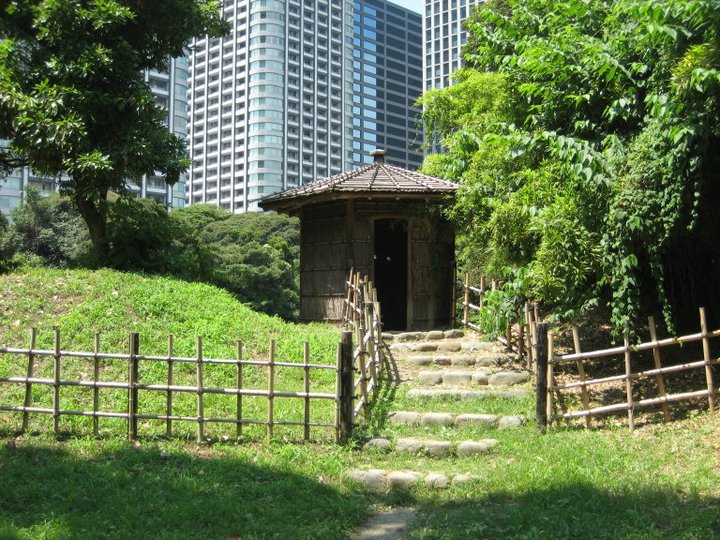
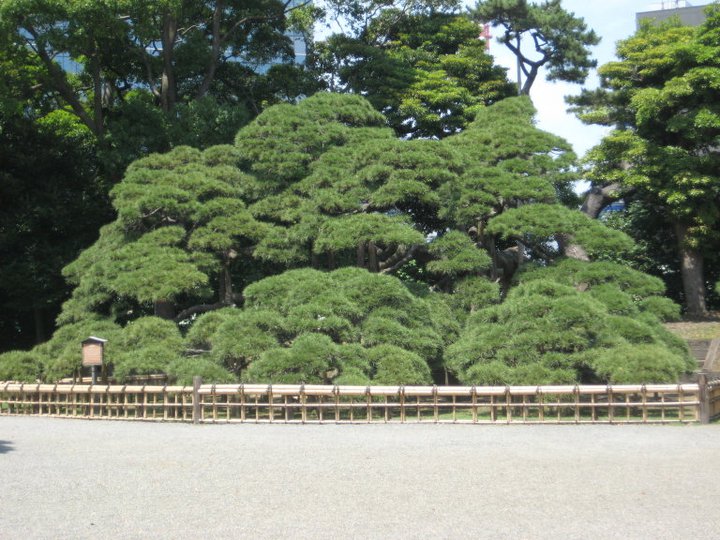
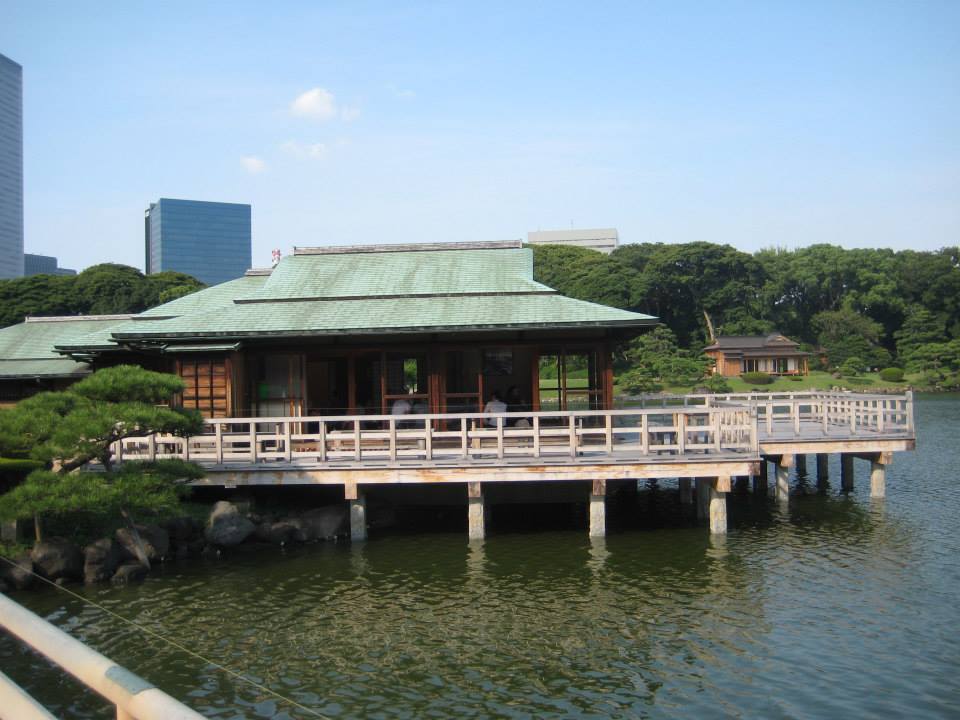
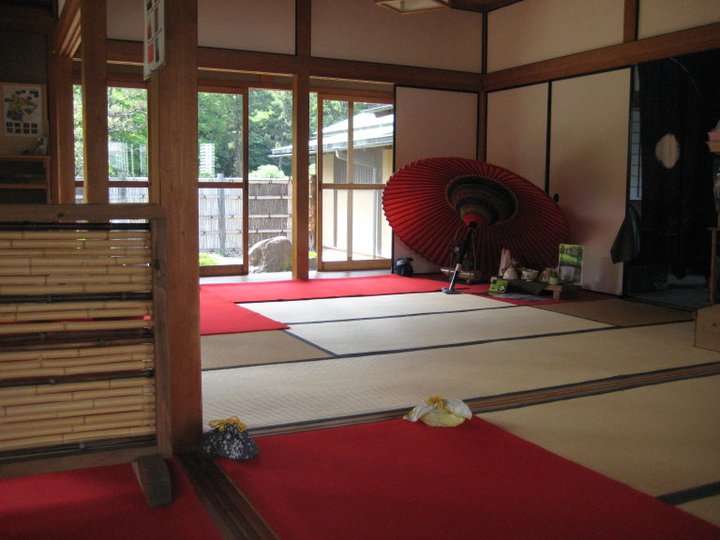
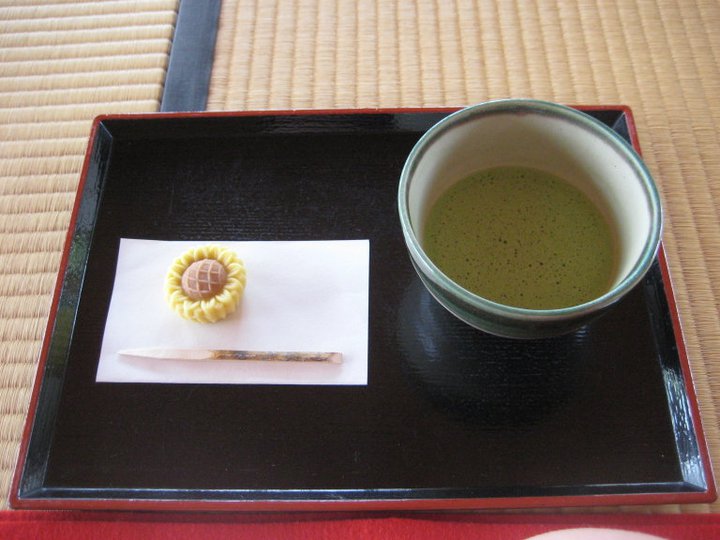
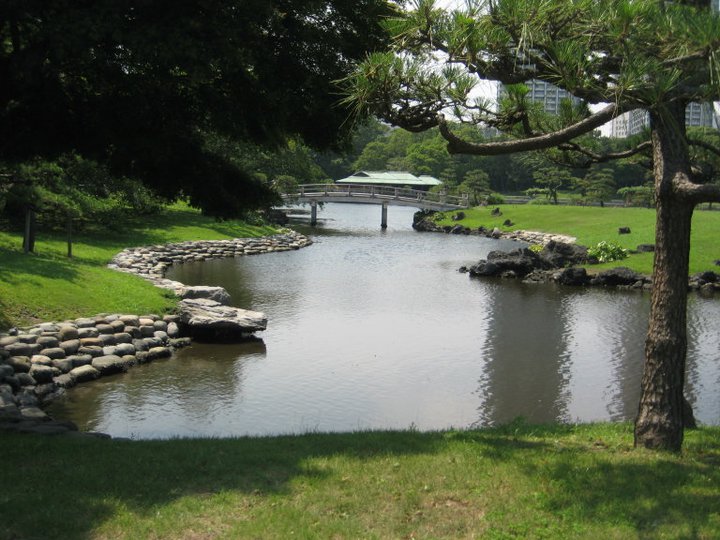
Pair this visit with a visit to the Tsukiji market, as they are very close to one another!
Meiji Shrine
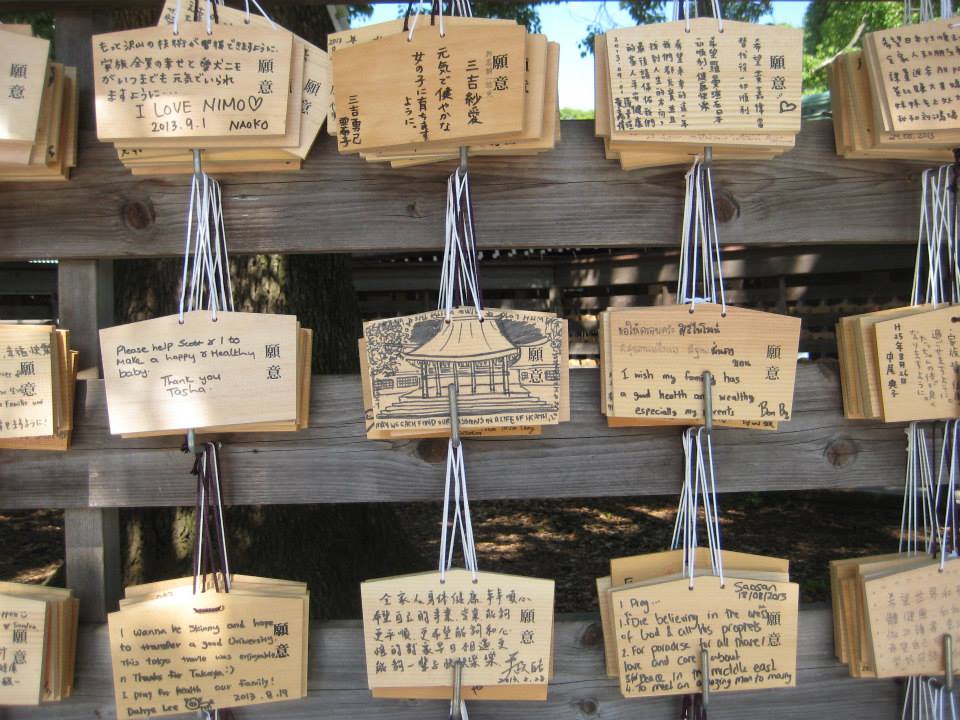
Japan is home to many beautiful temples and shrines, but if you only have time for one, make it Meiji Shrine (or Meiji Jingu, as you will sometimes see it written. Jingu means shrine). Emperor Meiji is one of the most influential emperors of Japan’s history, as it was during his reign that Japan began to remove itself from isolation and integrate with the west. Meiji was the first to cut off his topknot, which was a huge deal.
This beautiful and historic shrine is nestled in Yoyogi Park, surrounded by lush greenery and back gardens that Emperor Meiji had built for his wife (this is a great place to bring your husband to encourage him to step up his gift giving game!). In the main part of the shrine, there is even a very famous spot where you can write your own wishes on little wish tablets. I really enjoyed the experience of writing and hanging my wish, but even if that’s not your thing, it’s fascinating to see all of the wishes from all over the world hung together. And this isn’t just a tourist spot; the locals flock to Meiji Shrine as well. If you’re really lucky, you’ll even catch a wedding!
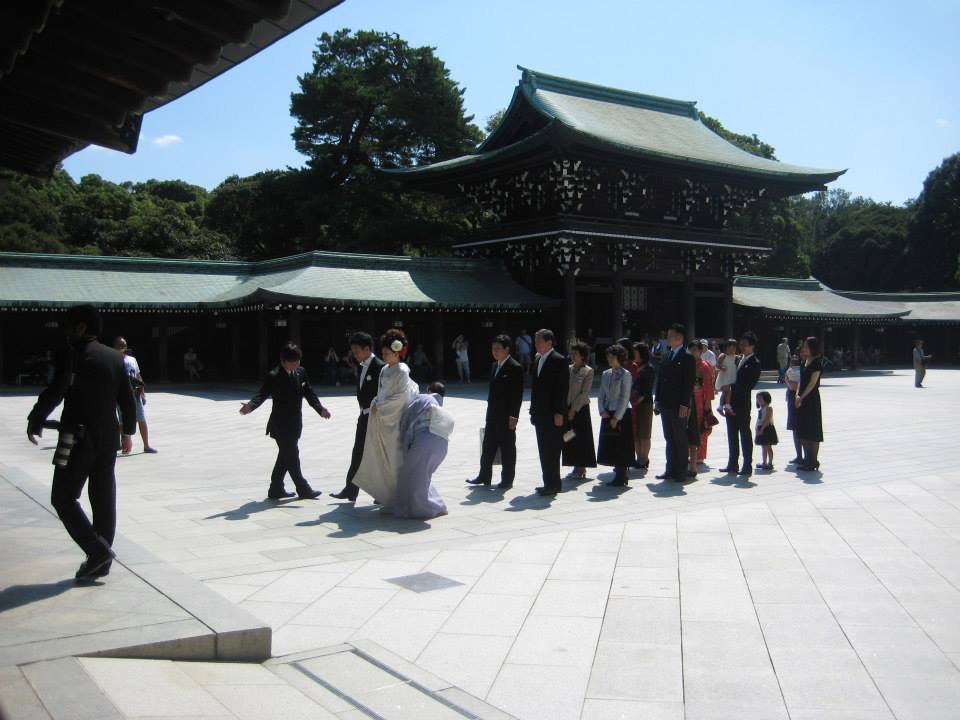
If you have time, plan to pair your Harajuku day with Meiji Shrine. They are both must-sees, and they are very near each other!
Harajuku (on a Sunday!)
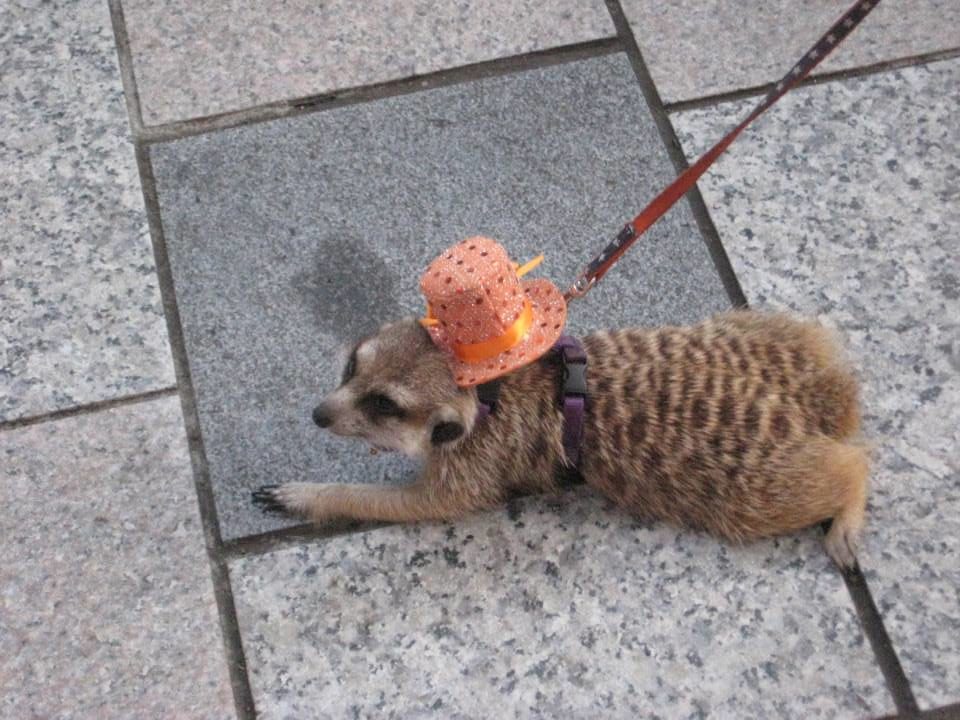
“Japanese fashion.”
If those two words conjure a mental image of a girl dressed up as a Little Bo Peep cupcake with blue hair teased up to the sky, you are thinking of a Harajuku girl. Harajuku is where the super funky cosplay fashion girls come to hang out. Their outfits are so elaborate and outrageous, but they aren’t dressing up so you can gawk and take pictures. They are just living their lives. So put away your camera and enjoy the incredible fashion show in real time! The best day of the week to go is on Sunday. Just hang out in the neighborhood, particularly around Yoyogi Park and Jingu Bashi Bridge. You’ll never see anything quite like this anywhere else in the world.
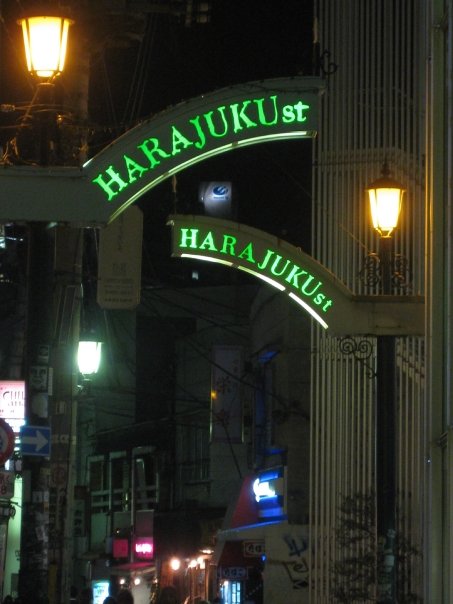
Takashita Dori is the most famous and quintessential Harajuku street. It is a narrow street lined with little shops and restaurants. You should definitely check it out to get a taste of Harajuku culture, but you needn’t spend too long there. It is quite crowded and touristy. If you want to see where the locals shop, go a few blocks away to LaForet Mall. In particular, make sure you go downstairs. There are a few unadvertised basement levels, and that’s where they sell a lot of the Harajuku Girl fashion pieces. They provide shops for all different styles—goth, cupcake, Lolita— and just looking at these incredible, elaborate outfits is like walking through a museum. You will see signs asking you not to take photographs, so just enjoy your moment with them!
More Harajuku Area Shopping
While you’re in the neighborhood, check out Omotesando. It’s a big shopping street, known as Japan’s Champs Elysee. Compared to Ginza, which is mostly big, fancy designer stores, this large avenue has some more unique boutique shops, in addition the the big mall-like experiences.
Now, I’m not much into fancy shopping while I travel, but it’s worth visiting Omotesando to spend some time in the Oriental Bazaar. This is a 3 story building that can serve as a one-stop shop for all of your souvenir shopping, if you so desire! They have everything Japanese that you could possibly imagine (plus the occasional Chinese items at significantly lower prices!). You know how souvenir shops offer convenience and digestibility for tourists, but they always feel a little inauthentic? Oriental Bazaar finds the balance for you. It’s clearly geared toward tourists, but the items are high quality, varied, and authentic. Personally, I have two different entryway curtains from them, as well as 4 different kimonos and yukatas between myself and my husband. And listen, I’m not writing a lifestyle blog here…but you should live your life in a silk kimono.
If you have time, plan to pair your Harajuku day with Meiji Shrine. They are both must-sees, and they are very near each other!
